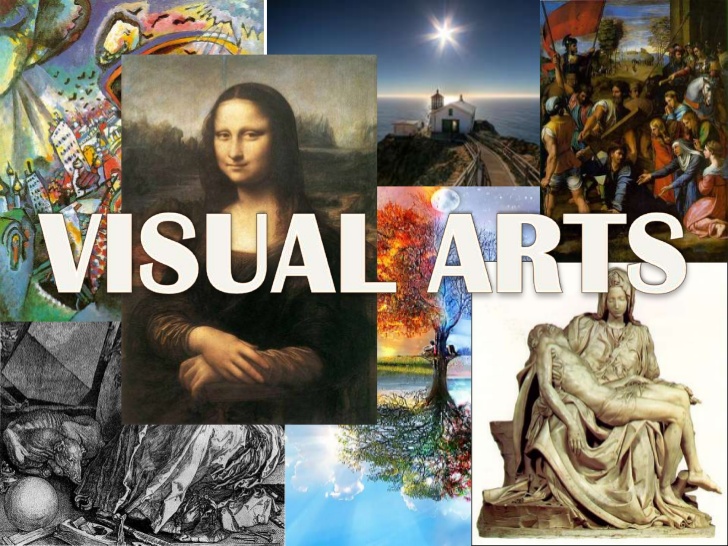INTRODUCTION TO VISUAL ARTS

Dear Grade 10s welcome to VISUAL ARTS!!
Visual art covers a broad field of creative practice that involves the hand, the eye, the intellect and the imagination in conceptualising. Artists usually create two dimensional artworks, three dimensional artworks, objects and environments that reflect the aesthetic, conceptual and expressive concerns of individuals.
The visual arts are art forms that create works that are primarily visual in nature, such as ceramics, drawing, painting, sculpture, printmaking, design, crafts, photography, video, film making and architecture. These definitions should not be taken too strictly as many artistic disciplines (performing arts, conceptual art, textile arts) involve aspects of the visual arts as well as arts of other types. Also included within the visual arts are the applied arts such as industrial design, graphic design, fashion design, interior design and decorative art.
The current usage of the term "visual arts" includes fine art as well as the applied, decorative arts and crafts, but this was not always the case. Before the Arts and Crafts Movement in Britain and elsewhere at the turn of the 20th century, the term 'artist' was often restricted to a person working in the fine arts (such as painting, sculpture, or printmaking) and not the handicraft, craft, or applied art media. The distinction was emphasized by artists of the Arts and Crafts Movement who valued vernacular art forms as much as high forms.
TOPICS IN VISUAL ART:
-
YOU WILL CONCEPTUALISE THROUGH THE DEVELOPMENT AND REALISATION OF CREATIVE IDEAS IN YOUR SOURCE BOOK.
-
MAKE CREATIVE ARTWORKS AND PRESENT THEM.
-
STUDY ARTWORKS TO EXPLAIN THE HISTORICAL POLITICAL, SOCIAL AND ECONOMIC BACKGROUND OF CIVILISATIONS/ STYLES / MOVEMENTS AND INDIVIDUAL ARTISTS IN VISUAL CULTURE STUDIES.
(Please refer to attached pdf for detailed examples relating to your topics)
TASK 1- Grade 10s please make sure you read these formal art elements, you covered these art elements briefly last year (in Grade 9). You need to know these by heart as they will be relevant till matric and will be very helpful throughout your Visual Arts academic career. I have also attached clear images to provide you with examples, please revise!!
REVISION OF FORMAL ELEMENTS OF ART:The formal elements of art are an fundamental part for visual analysis and describing images. The formal elements are also important vocabulary for you as a visual arts student. You need to consider that the formal elements you use might not be same when you analyse a painting or a installation or sculpture. Every medium has its specific language and visual elements.
Line
There is much more to line than a simple outline. A straight line is always the shortest route to connect 2 points with each other. A line can have many expressive uses or occurrences, depending on the texture, thickness, fragility, wobbliness, intensity and speed with which it was drawn. The quality of a line will depend on the type of material that is being used to draw it.

Form
Form refers to the dimensions and the volume of an object.
When you discuss form you can see if there are any certain predominant shapes.
Geometric
squares, rectangles, circles, cubes, spheres etc.
Organic
Curving natural shapes such as plant forms, as found in nature
Space and volume
Real space is three-dimensional. Space in a 2-dimensional work of art refers to the feeling or suggestion of depths or three dimensions. It can also refer to the artist's use of the area within the picture plane.
Positive and negative space
The area around the primary objects in an artwork is known as the negative space, but the area occupied by the object is known as the positive space.

Texture
Texture refers to the surface quality of something. Which all have their very own characteristics that you can see or feel. The 'skin' has a certain texture.
In a 2-dimensional artwork texture refers to how an object would feel like in real life (when you could touch it)
- Hard, soft, rough, smooth, hairy, leathery, sharp, etc.
In a 3-dimensional work an artist can apply actual texture to add tactile quality to his work. It might also be used to enhance the shades created by striking light.
- Rough, smooth, bumpy, silky, prickly, velvety, slippery, slick, shiny, repulsive, enticing, etc.

Colour
Colour can be seen as light which is reflected off objects. It has three main characteristics
- Hue (red, yellow, green, blue, etc.)
- Value (how light or dark it is)
- Intensity (how bright or dull it is)
You can describe colours by referring to cold or warm colours. Warm colours are red, yellow, orange and cool colours such as blue, dark green, white, black, grey, depending on which end of the colour spectrum they fall.
When you try to tell something about a painting which contains no colours, you can still talk about the tone. You can describe how light or dark it is and where it falls on the grayscale from white to black. This is also called value.
In various art works we can also define the colour contrasts that are used to put more focus on certain aspects of the work. If you look at the artwork from Munch on the right, you will see a warm-cold contrast (what happens is that your eye first focusses on the warm colours, instead of on the cold ones) But of course there are many more contrasts that you can use. You can also use colours in an expressive manner, that means that you use colours according to that what your trying to express. It might also be that your use of colours depend on the symbolic value of a colour. 
Space
